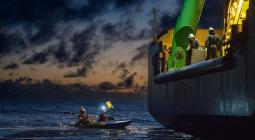Deep-sea mining: why is interest growing and what are the risks?
As Norway becomes the first country to approve deep-sea mining, scientists are alarmed but supporters insist it will aid the energy transition
What is deep-sea mining?
Mining the deep sea involves the extraction of solid mineral resources from the seabed, at depths greater than 200 metres. Vast areas of this unexplored abyss, particularly in the Pacific Ocean, are littered with polymetallic nodules, rich in manganese, nickel, copper, cobalt and other trace minerals. Minerals are also found near hydrothermal vents and within seamounts (underwater mountains).
Why is there a growing interest in deep-sea mining?
The race to cut carbon emissions to combat global heating has led to a soaring demand for copper, cobalt, nickel and other ingredients needed for the energy transition. In 2040, the world’s need for many of these metals, used for electric vehicle batteries, solar panels and wind turbines, will be twice what it is today, according to the International Energy Agency.
Demand for copper, for instance, is expected to double, from 25m tonnes in 2020, to 50m by 2050. Supporters of deep sea mining argue that a huge expansion of mining on land would cause further environmental havoc: mining the sea floor is less destructive, they say. Critics say land mining will carry on and that deep sea mining will cause “irreversible harm” to marine life and systems.
What are the potential environmental impacts?
Scientists have warned of large-scale, severe and irreversible harm to global ocean ecosystems, already threatened by the climate and biodiversity crises, if deep-sea mining goes ahead. In July, a team of scientists found 5,000 new species in the deep-sea bed, most unknown to science, living in a mineral-rich area of the Pacific Ocean, known as the Clarion-Clipperton zone, targeted by deep-sea mining firms.
Studies have shown that mining below 200 metres can cause harmful noise, vibration, sediment plumes and light pollution. A recent study looking at drilling tests in Japan, showed animal populations decrease where mining occurs and it leaves a wider footprint than previously thought. There is also the risk of leaks and spills of fuel and other chemicals used.
Which countries oppose or support deep-sea mining?
Last year, the UK, Sweden and Ireland joined countries calling for a moratorium, pause or ban on commercial deep-sea mining. The 24 states involved include Germany, France, Spain, Brazil, New Zealand, Canada Costa Rica, Chile, Panama, Palau, Fiji and the Federated States of Micronesia. The French president, Emmanuel Macron, has backed a complete ban.
Car manufacturers such as BMW and Volvo, and the car battery maker Samsung, have pledged not to use deep-sea minerals in vehicles.
Norway’s approval of deep-sea mining in its national waters puts it at odds with the UK and the European Commission, which has pushed for a pause on environmental grounds.
Who controls the deep sea?
The International Seabed Authority (ISA), a quasi-UN body made up of member states, regulates activities in the seabed in areas beyond national jurisdictions. In June 2021, the small island state of Nauru notified the ISA of its intention to start deep-sea mining, which triggered a rush to complete the ISA regulations. After failing to reach agreement in 2023, the ISA now has until 2025 to finalise regulations that could decide whether and how countries can mine the deep sea in international waters.
Cover photo: A diamond mining vessel uses a 'crawler' tractor to suck up sediment from the seabed off the coast of Namibia. While similar, this process is not the same as mining for polymetallic nodules, which have yet to be mined commercially. Photograph: Bloomberg/Getty Images





